
Birds are the wildlife we interact with the most. I hear and even see birds every single day. I am sometimes awake before them too. I would miss them if they weren’t there. I love to observe all the different kinds of birds in my yard and at the places we go. I also love to take photographs of them too. Taking photos of them is not only a great way to document them but also a great way to develop my skills as a photographer.
But each year that goes by, we are seeing less and less birds. Even the “common” birds are becoming less “common”. Nearly a quarter of the United States birds’ species are slipping silently into the annals of history.
Birds like the Greater Sage-grouse, Piping Plover, and the Cerulean Warbler are falling victim to the growing list of threats.
They may go the way of the Ivory-billed Woodpecker. Because of its massive size, nearly 36 inch wingspan, it still captures the hearts and imaginations of birders all over the US.
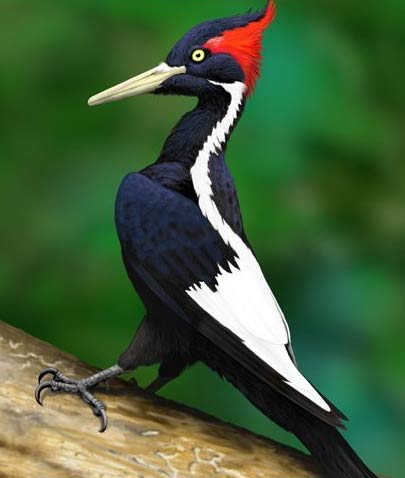
Although officially classified as definitely or probably extinct, the Ivory-billed Woodpecker still continues to generate reports of sightings as well as continued intensive research into these said sightings. It’s very distinguished by their size, these woodpeckers are also marked by white markings on their neck and back, extensive white trails edge their upper as well as underneath their wings, pale yellow eyes, and ivory-colored bills. The males have a bright red crest. A large triangle of white is seen on their back when their wings are folded. Often times it is confused with the Pileated Woodpecker because it is of similar size and bears similar markings as well.
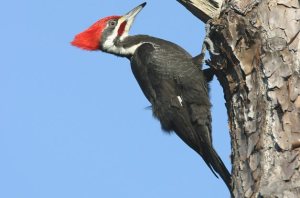
The territory of the Ivory-billed was once throughout most of the Southwestern US and as far north as southern Illinois. These woodpeckers were thought to mate for life. Due to the widespread destruction of their original habitats, almost all that is known from them is from old reports and hand-drawn illustrations.
A team from Cornell Lab of Ornithology claimed to have spotted one in a swamp in 2004, but it was later proved inconclusive. The Ivory-billed Woodpecker is often referred to as the “Holy Grail” of Ornithology. It hasn’t been seen since 1944, but people across the country continue to hold out hope for its existence.
There are some easy things you can do on your own property and in your own backyard today to make it a bird-friendly habitat.
Learn to indentify non-native invasive flora and fauna from your region and work to remove them from your yard. Don’t bring any invasives into your yard! Invasives don’t provide as much good food or habitat as natives do, and can threaten healthy ecosystems.

Let your yard get a little bit messy. Leave snags for nesting places and stack downed tree limbs to create a brush pile, which is a great source of cover for birds during bad weather.
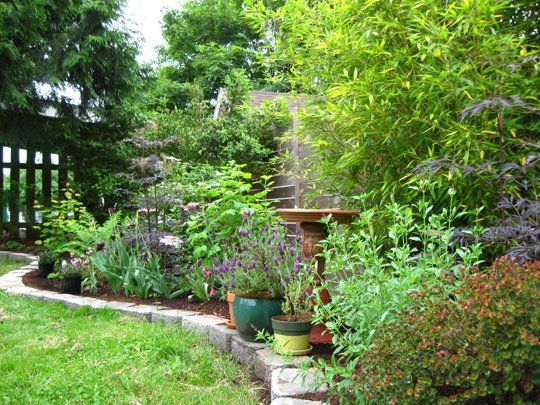
Create or protect water sources in your yard-birds need water to drink and bath in, just like we do. Be sure to clean and change the water three times a week, especially during mosquito breeding season.
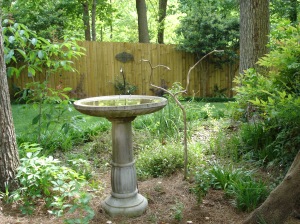

Close your blinds at night and turn off lights you aren’t using. Some birds use constellations to guide them during their annual migrations and the bright lights can disrupt their sense of migrations.
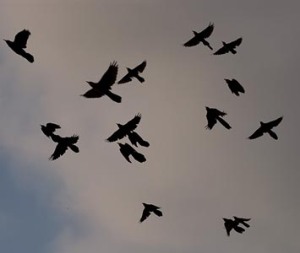
You can also watch for birds, count the, photograph, and even identify them too. A good place to go to identify them is Audubon’s Field Guides, which all available in print at any fine book store, as well as online too at www.audubonbirds.org. You can also find out more information to make your home and yard more bird friendly at www.audubonnathome.org.
How have you made your yard and home more bird friendly? Do you enjoy watching birds or photographing birds? What birds have you seen lately? Do you have any favorite species of birds? Are you a bird owner? Please feel free to comment below-I would love to hear your answers!
***Please note I am in no way affiliated with Audubon nor is this post sponsored by Audubon. I just love birds and wildlife and wildlife preservation and I thought you might enjoy a brief piece on this topic as well 🙂***


